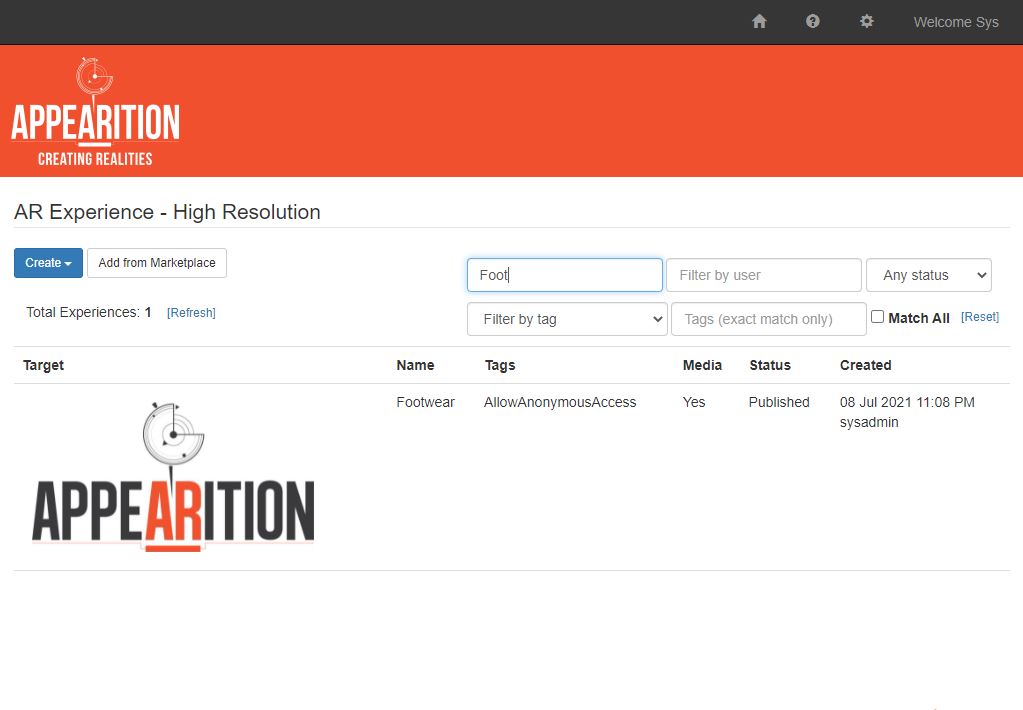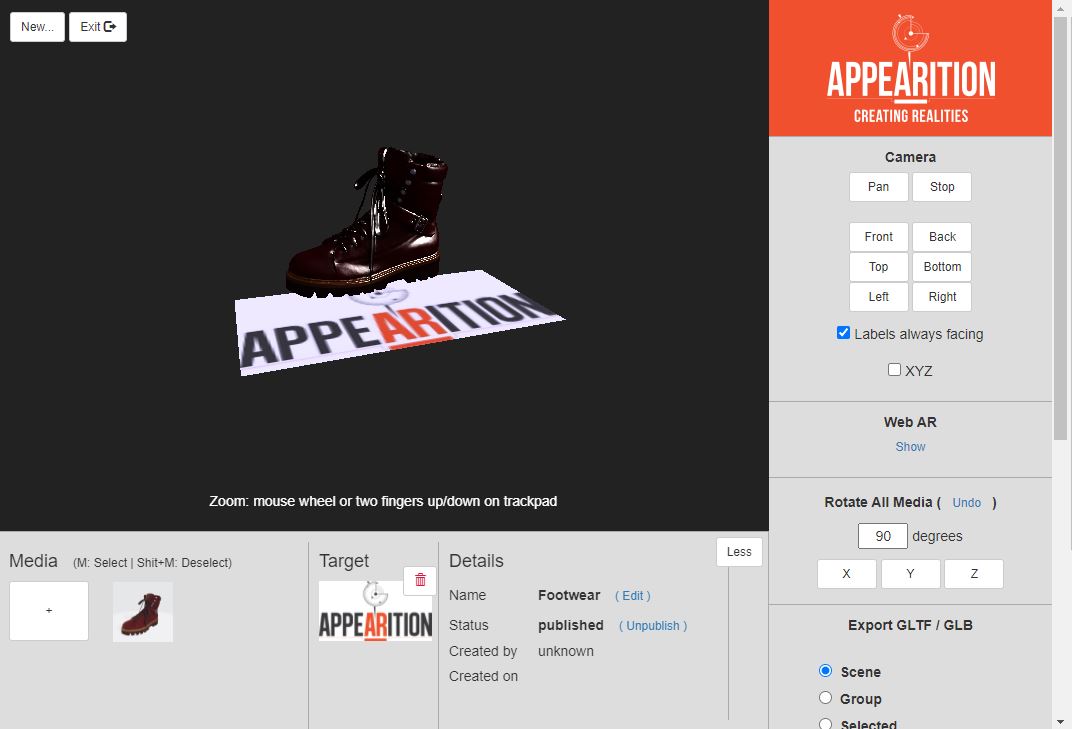Terms and Concepts
AI#
Artificial Intelligence. This is a wide topic covering many computer centric approaches that attempt to mimic how a human mind might proceed in solving complex computational problems. Examples of AI, and services that can be access with the Appearition Platform include computer vision, predictive analysis, machine learning data analytics, and more…
Author and publish#
The process of managing digital material by using centralised on-line publishing services. This process is usually managed through a role-based workflow that enables many users of the system to carry out specific tasks within a collaborative publishing cycle. Key roles may include system administrators (control of the system); power user(can control access to channels and manage users); content creators; content reviewers; content publisher (approval/rejection of content). Other roles may also be included.
Baked Apps#
The practice of building client applications with static digital material that cannot be changed once the client application is built and released.
Channel#
A channel represents a group of related records inside a tenant.
How you treat a channel depends on your needs. In the Appearition cloud, a subscription to an account will result in a dedicated channel being allocated to the account. All content created by that account is stored in the channel and not available to anyone else.
In other solutions, a channel can be used to represent a specific app. Consider an organization that has subscribed to an entire tenant. Each app built and released can be allocated to a dedicated channel for storing and retrieving content.
Computer Vision#
Computer vision provides the means for computer systems to extract information from digital images or videos.
Computer vision methods include: acquiring, processing, analysing and categorising digital images or parts of an image.
Content Library#
This is a source of digital files such as images, 3D models and videos which can be used as part of XR experiences.
Data Store#
This is a source of information that can be queried to get to data. It can be a relation database (SQL), a document database (No SQL) or an unstructured data store (e.g. data lake). The data store must expose a query API which can be called upon to filter and retrieve data.
Deployment#
Extensible#
The Appearition Platform has been designed as a modular system which allows for new features and capabilities to be continuously added
GPS#
Global Position System.
IPS#
Indoor Position System.
Just-in-Time Access#
An Appearition platform setting that enables digital material to be downloaded when a specific target trigger occurs on the client device.
Location Services#
A computer service that provides information about a geographical location in terms of its relative position in latitude and logitude values.
Immersive Experiences#
An immersive experience is one where a person is presented with information and content projected into the real world space around them. This content can be interacted as though it were a real physical object. These are also known as AR, VR or MR experiences or collectively, refered to as XR Experiences
It’s more than text, images and video rendered on a flat screen.
An experience engages multiple human sensors. Visually, objects are presented in 3D and immersion of those objects provide an extra 3 dimensions. An experience of being able to walk around, look behind and over virtual objects. This is known as six degrees of freedom, more succintly referred to as 6DoF. You can argue a 7th dimension is also available as some immersive experiences will allow you to look inside an object and examine the inner workings. Consider a car engine presented in front of you. You can walk around it, look under and over it and then peel back layers to see the moving parts inside.
6DoF… Walk around a 3D object and look under and over it.
Aside from visualisations, immersive experiences can target two more human senses, sound and touch. Consider experiences where volume, pitch and frequency can be used to distinguish, simulate and place virtual objects in the real world space. Sound can be used to inform the condition or state of a virtual object in real world terms.
Touch experiences are those where people can control and interact with virtual objects using hand held devices known as paddles. Beyond this is the emerging concept of haptics where hand gestures can be identitied and tracked with computer vision and translated into commands and instructions against virtual objects.
IoT#
Location Services#
A computer based service that provides information about a location. Examples include GPS (for outdoor location pinpointing or tracking) and IPS (for indoor location pinpointing and tracking).
Media#
Any type of digital content or data that is played during an AR, VR or MR experience. When creating experiences on the Appeariion platform, the author will be required to choose or upload content.
Module#
A module represents a specific function or feature on the platform. A module can extend an existing feature, provide an alternative implementation to an existing interface or introduce a whole new set of capability to the platform.
There are already numerous modules available on the platform and more are being added all the time. You can read about them in later sections of this documentation portal.
On-line and Off-line Modes#
An Appearition platform setting that enables digital material to be cached by the client device, and re-used in cases that internet connectivity is disrupted.
Pre-loaded Access#
An Appearition platform setting that enables digital material to be pre-downloaded in accordance with a specific client device status (e.g. on first installation and on encountering favourable on-line connectivity)
Proof of Concept (PoC)#
PaaS#
Platform as a service (PaaS) is a cloud platform service that takes responsibility for backend services and has centralised management. It delivers the data and development framework that developers can use to deploy dynamic apps that continously refresh their data and content in response to authorised changes made on-line.
Studio#
The Appearition Platform comes with an immersive editing studio out of the box. This is represented as a series of web pages in the default portal as part of the AR Target Image and Media module.



Target Image#
Also refered to as “Target Marker”. It is an image uploaded when creating an Augmented Reality (AR) experience and used for image recognition and tracking via a native, wearable or WebAR app. When recognised, the Media which has been set on the AR experience will be rendered over the image
Tenant#
The Appearition platform has been designed as a multi-tenanted system. Essentially a tenant is an isolated part of the platform where content is stored in its own data store. Users of the platform are allocated to one or many tenants.
How you treat a tenant depends on your organisational needs. A tenant can represent anything from a business unit (e.g. HR, IT, Finance) to a faculty in a university (e.g. Faculty of Marketing, Faculty of Medicine).
VR/XR wearables#
XR#
XR stands for eXtended Reality and is a collective term that encapsulates Augmented Reality (AR), Virtual Reality (VR) and Mixed Reality (MR) experiences.